About how diverse the world can be, you can discover in many corners of the globe. One of them is Panama, located in Central America. Here, just 35 kilometers separate the skyscraper-filled capital from a village deep in the jungle, practically cut off from civilization. The first part of the route is traveled by car, and the next by river. There’s no direct road to the village inhabited by the Embera people, so I hop into a canoe led by one of the locals. We are in an extraordinary place – the rainforest of Chagres National Park.
Table of Contents
Embera – Who Are They?
The Embera are river people who have been building homes along riverbanks for centuries. Their population is around 240,000 people, most of whom live in Colombia, where the history of this tribe begins. Part of the population emigrated south at the end of the 18th century in search of better living conditions, eventually reaching Panama. Today, their population in Panama is about 30,000.
I arrived at a place on the banks of the Chagres River where a few of these traditional villages, including Parará Purú, are located. This is one of the few places where old traditions are still cultivated, and the Embera language is spoken. Speaking of language, the Embera people also speak Spanish, as the Panamanian government provides education in this language.
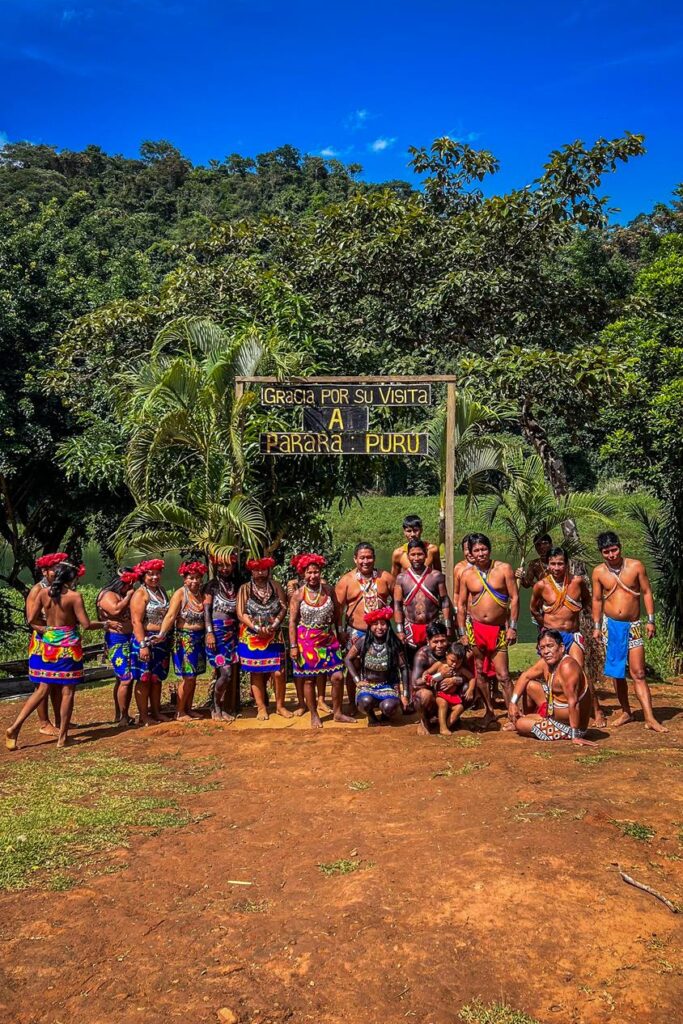
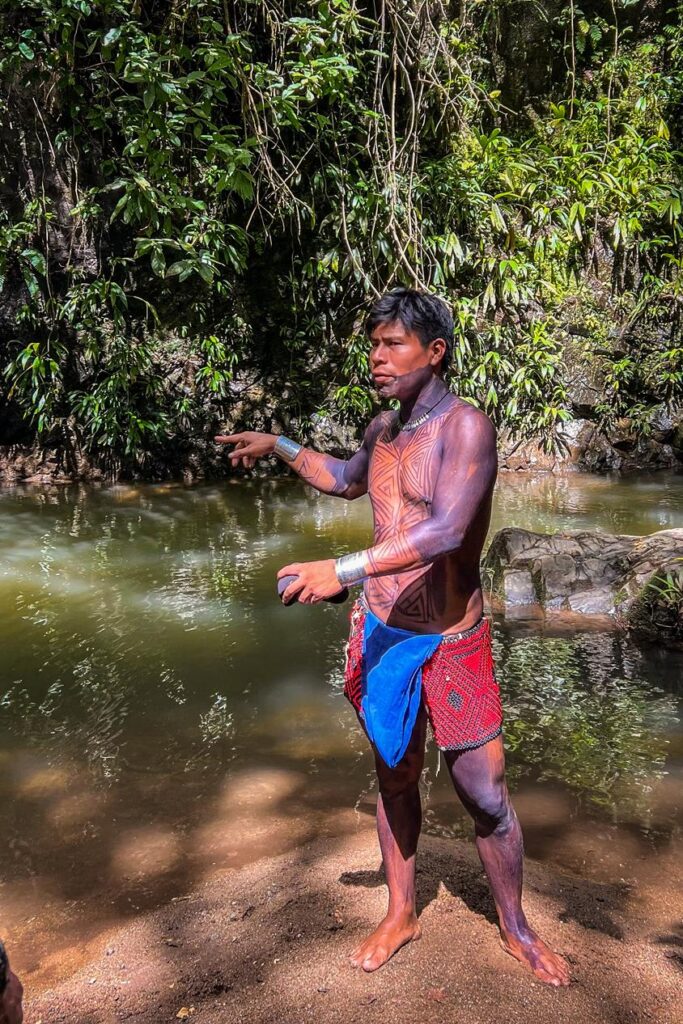
The History of Embera in Panama
In 1984, the area where the Embera community settled was declared a national park and an indigenous reserve. However, this decision brought many restrictions. Tribe members were required to follow strict rules, such as a ban on cutting trees, restrictions on fishing, and a complete hunting ban. The rules for plant cultivation also changed. This situation forced them to look for new ways of living and adapt to a new reality.
One of the sources of income became tourism. The Embera began welcoming visitors, sharing their culture, traditions, and way of life. Tourism not only provided them with a source of income but also an opportunity to spread awareness about their tribe and history.
Despite these changes, the Embera remained faithful to their traditions. Their language, Embera, is still spoken and taught to younger generations, preserving cultural heritage. Traditional crafts, such as weaving and jewelry making, have also stood the test of time, with their colorful, handmade products appreciated by tourists and in the broader cultural context. When visiting, it’s good to know that each stall is run by a different family, meaning that income from handicrafts is not shared among all village residents.
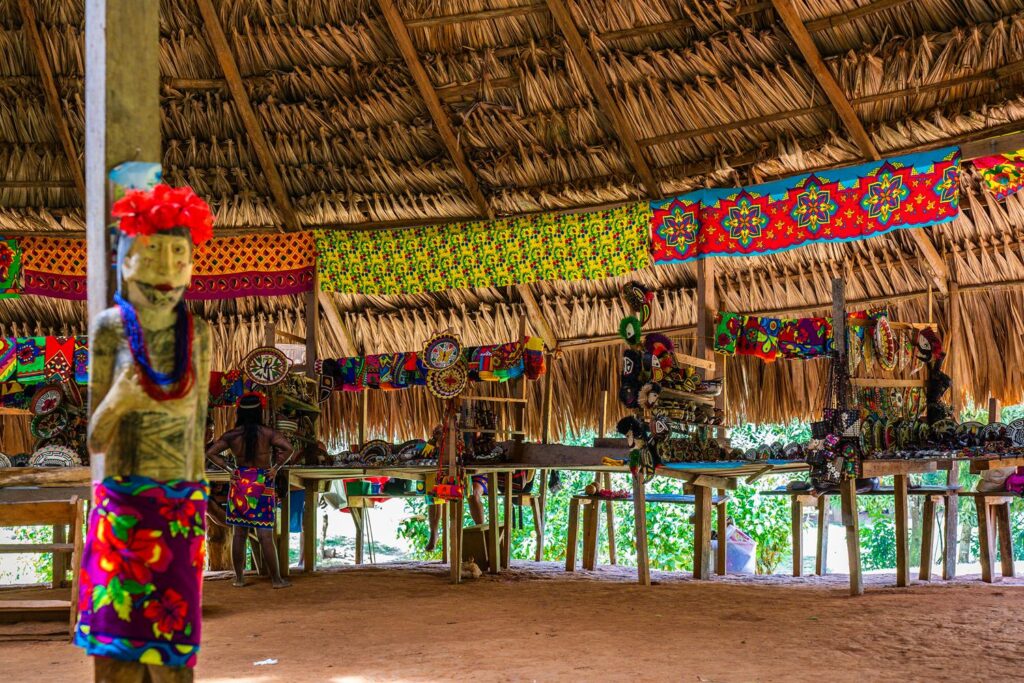
Visit to the Village
We started our trip to the Embera village with a trek toward the waterfall. We walked along the Chagres River, the largest river in the Panama Canal basin. In 1502, Christopher Columbus named it the “river of crocodiles.” Luckily, I didn’t see any crocodiles in Río de los Lagartos, but the journey was rich in other wildlife: sloths, various birds, and colorful butterflies.
Our guide docked the boat, and we continued by walking in the river, which at times reached above my knees. The route isn’t very challenging, but there were harder moments, like crossing rocks taller than us. It was also slippery at times, but the route is magical, especially for water-walking enthusiasts like me. At the end, we can swim in the waterfall and return by canoe, which takes us back to Parará Purú village.
A meeting with the Embera tribe is an extraordinary opportunity to learn about their traditions and culture. Their colorful, traditional attire and handmade ornaments are captivating. During the visit, not only can we observe and listen to how life is in a traditional community, but we also have the chance to ask questions on any topic. There are no taboo subjects; you can learn practically anything.
However, the true magic of this place lies in the rituals and traditions that are still alive within the community. Visitors can experience aspects of Embera life – creating “tattoos” and traditional dances accompanied by songs and drums. This is a show of community strength and connection with nature. The “tattoos” are somewhat like henna – the jagua dye is used for decoration, sun protection, or insect repellent. Interestingly, in the community, when a baby is born, specifically at eight days old, they paint the whole body with jagua dye. This symbolizes rebirth and, interestingly, serves a practical purpose. When this is done while the baby is very young, body hair doesn’t grow later. That’s why tribe members have such smooth skin.
During the village visit, there’s a chance for lunch – tilapia fish with plantains. I also had the opportunity to wear traditional Embera attire – an interesting experience; I could wear it around Panama.
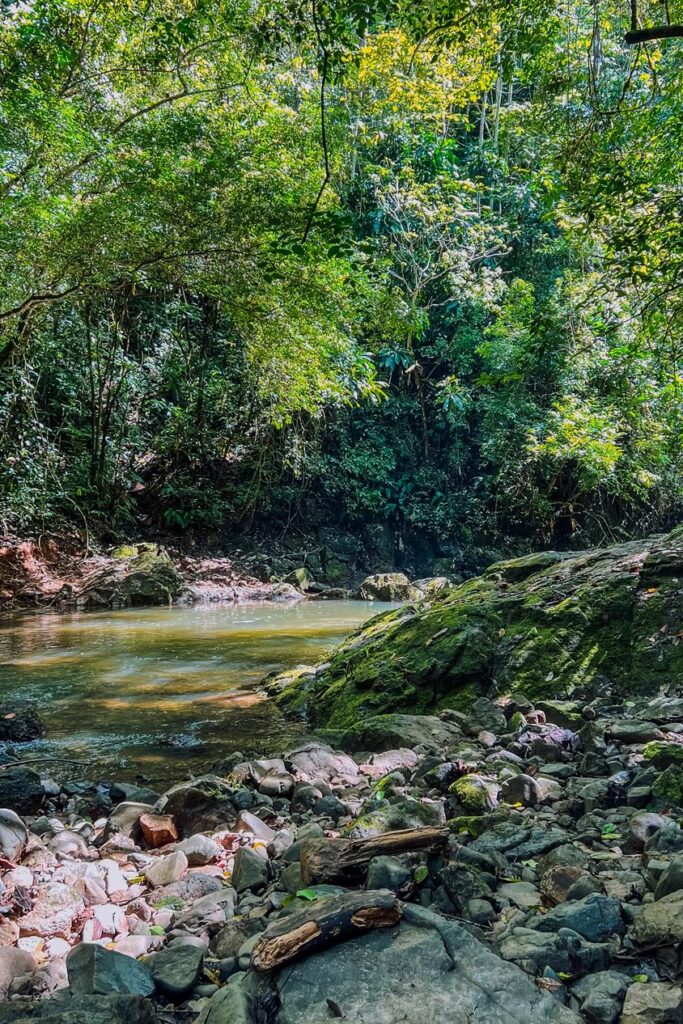
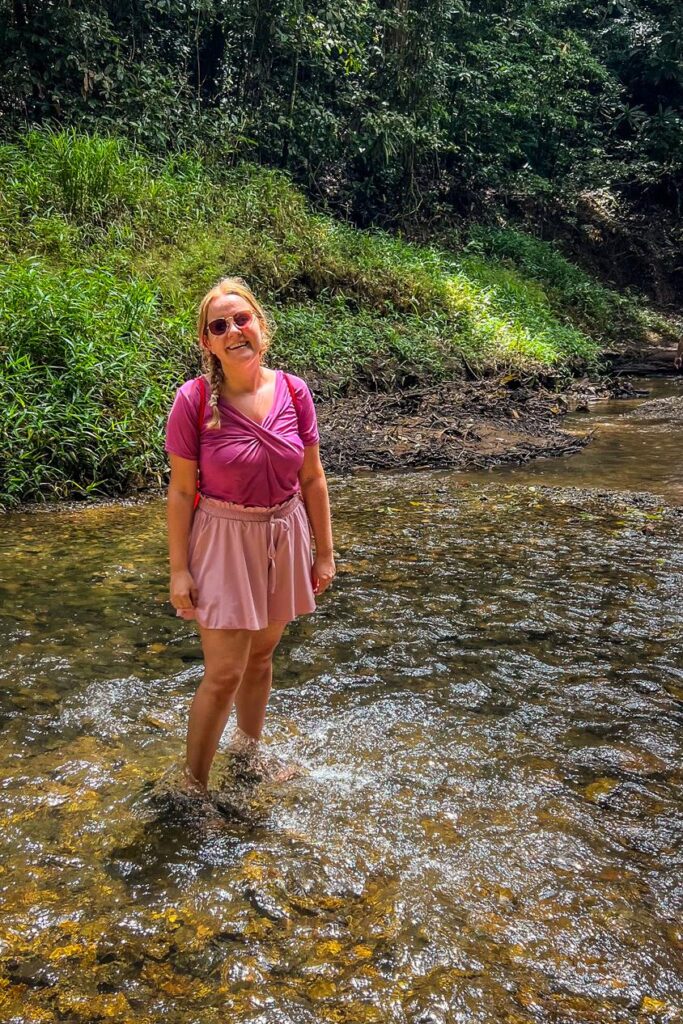
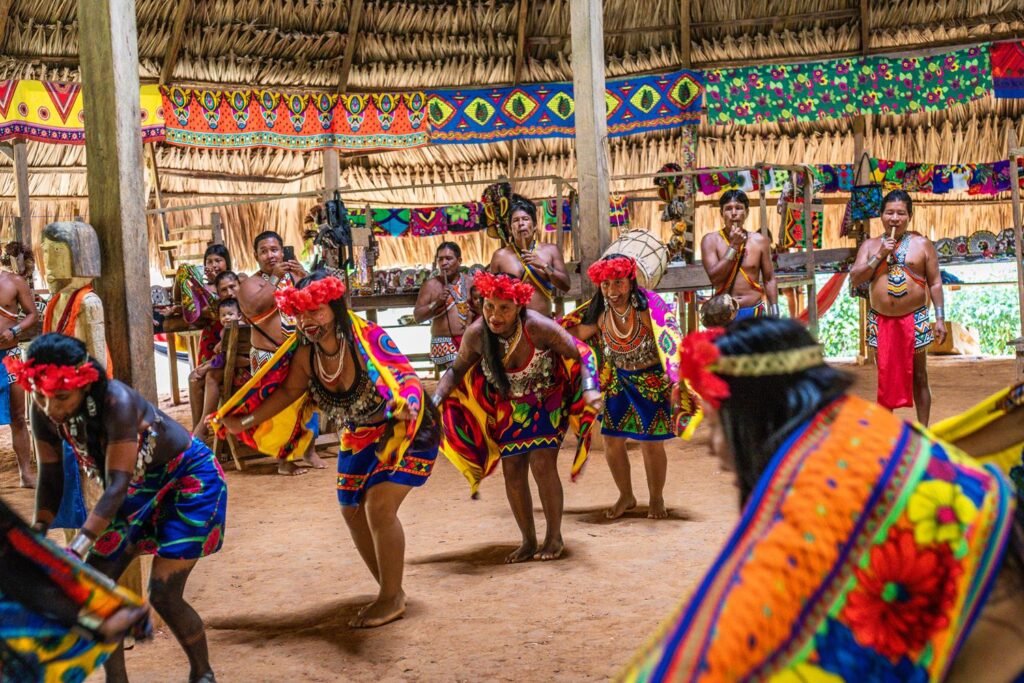
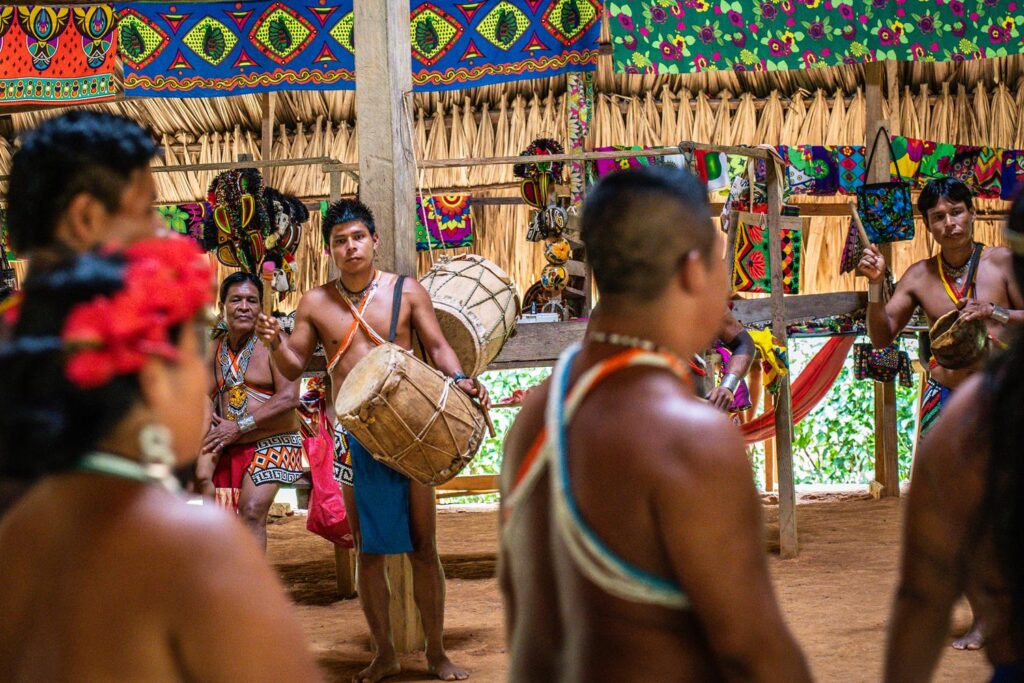
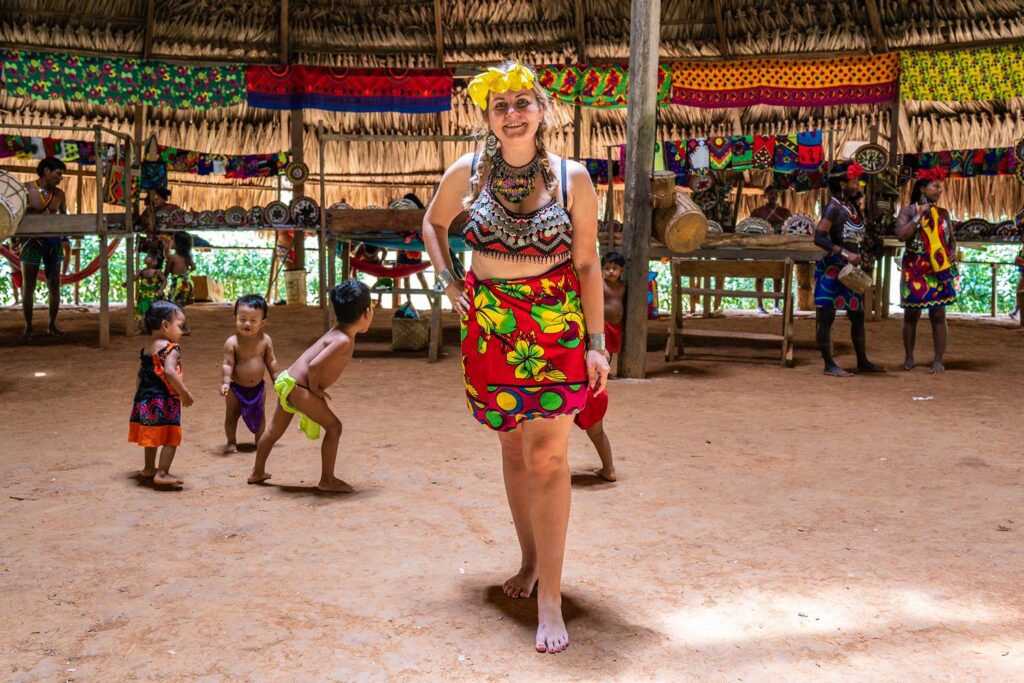
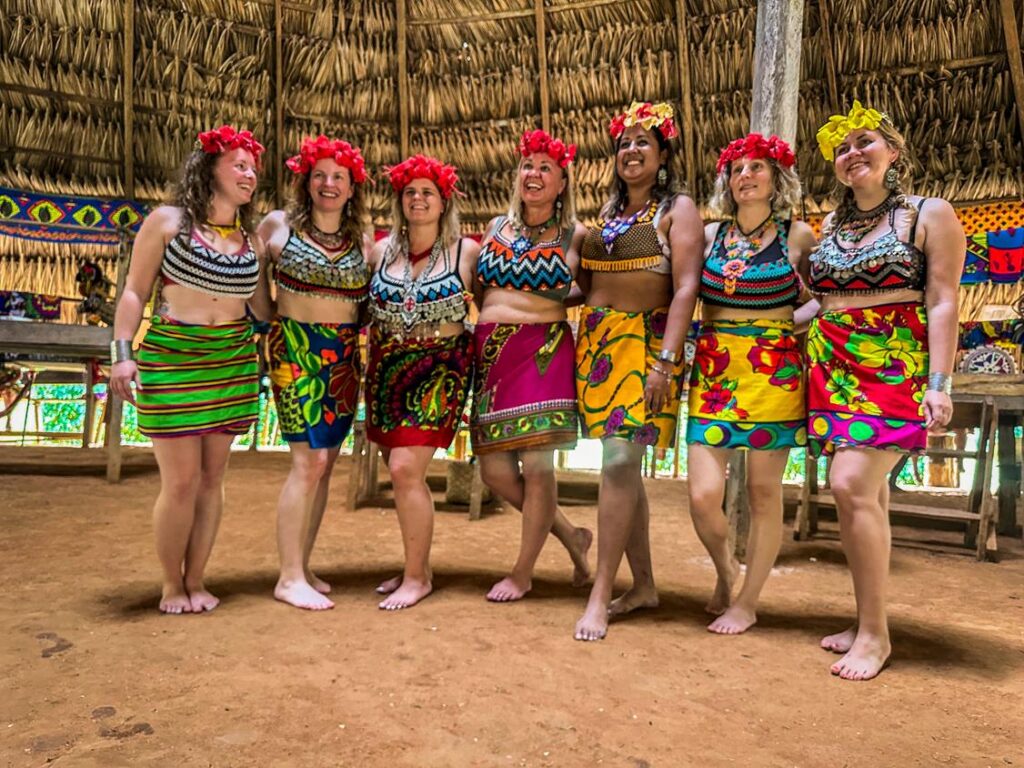
Embera Location
Rivers have played and still play a crucial role in the life of the tribe, providing food (fish) and allowing for transport, bathing, and other daily activities. Canoes were an important element of Embera culture and rituals. Especially in the past, canoe building was a significant skill, often seen as a men’s ritual.
Although today some Embera live in different places, many of their villages are still located by rivers. Statistics show that about 25% live in urban districts of Panama City.
How the Embera Live
Traditional Embera houses are open buildings on stilts, with thatched roofs and palm bark floors. Today, homes are often smaller, with wooden floors and tin roofs. Walls for privacy have also appeared, and traditional fire pits have been replaced by gas stoves. Some Embera also live in modern concrete houses.
A visit to this isolated corner of the world is more than a typical tourist experience; it’s a chance to glimpse the lives of indigenous people whose daily lives are based on harmony with nature and traditions passed down through generations. When visiting this place, remember that thanks to tourism, they can live here and still cultivate their traditions. Otherwise, it would be challenging to maintain them.
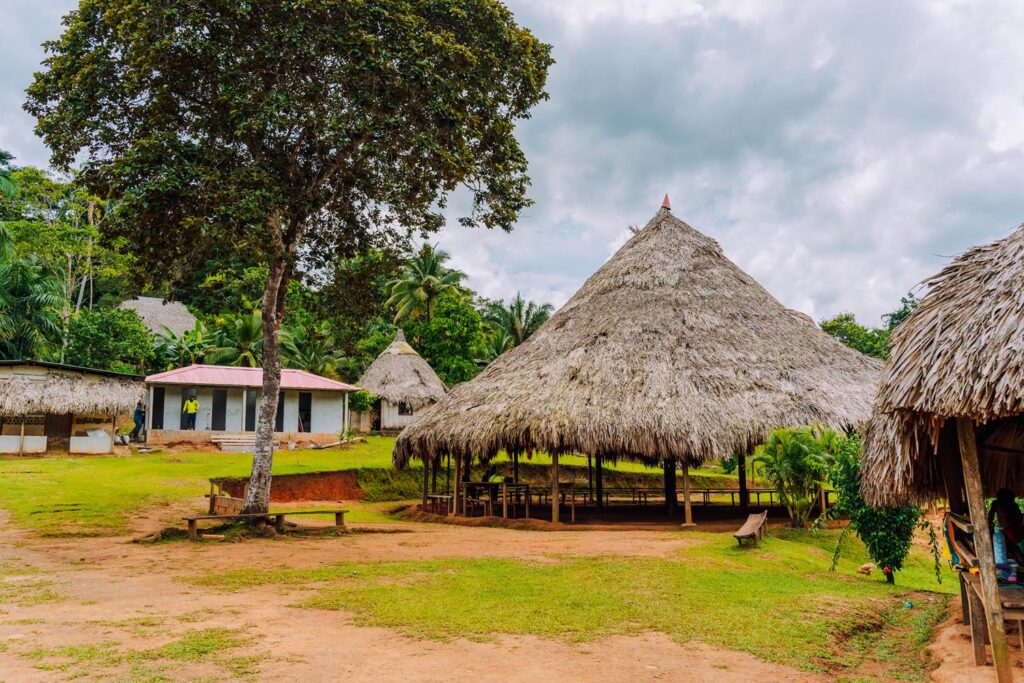
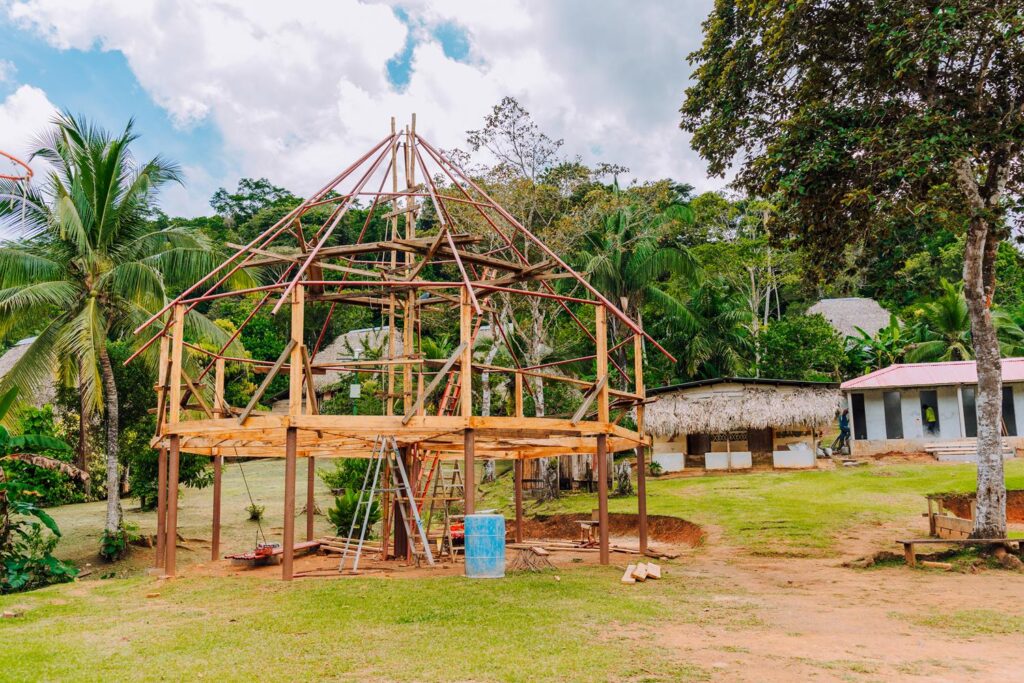
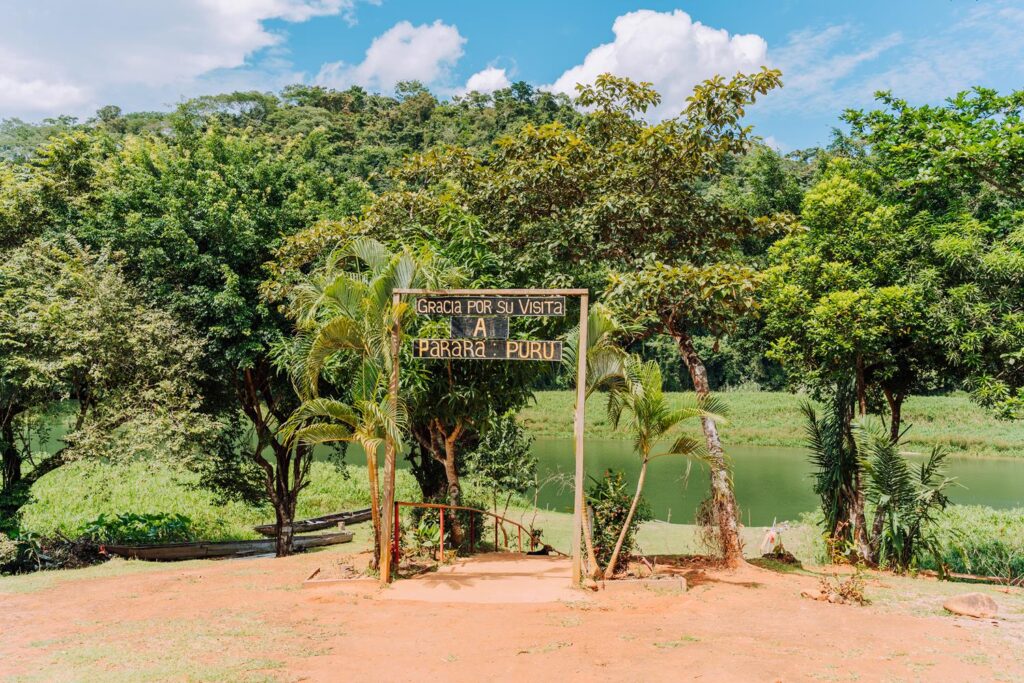
My trip was organized by Balaena. If you want to explore and feel Panama, I highly recommend it. https://balaena.travel/panama/
Going to Panama? Check out these posts:
What to See in Panama City? Top Sights and Attractions
Panama Travel Tips: What You Need to Know Before You Go
Isla Iguana – Panama’s Tropical Oasis
Special thanks to the Panamanian Tourism Organization & Adventure Travel Trade Association for the invitation to Panama.